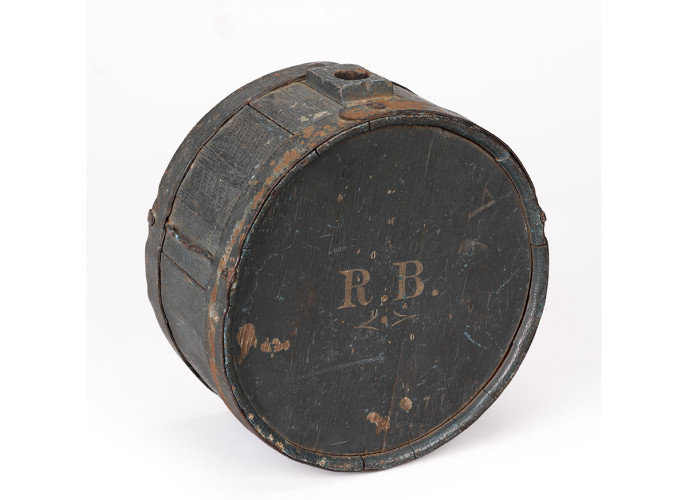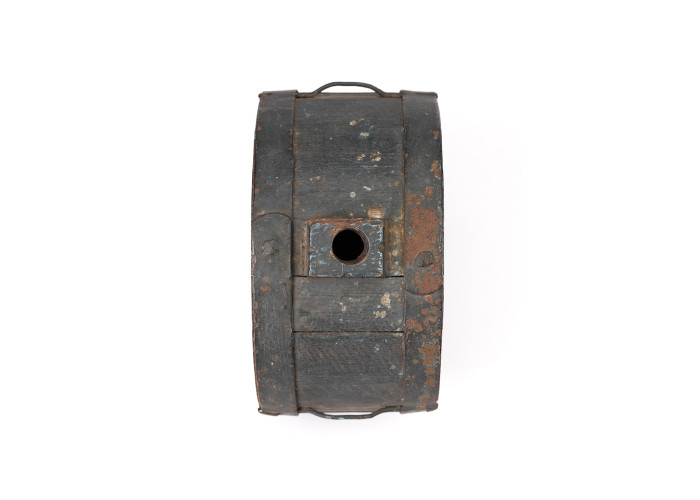Water Canteen
This is a standard War Department issue water canteen used by any rank, but usually by non-commissioned officers and private soldiers. This type of water canteen was used around the first half of the 19th century and at Waterloo.
Constructed by coopers, the container was edged with hardwood strips arranged at right angles to two rimmed wooden discs. These were all held together with iron straps, which passed around the front and back disc and held the coopered strips in place. The canteen was usually painted light blue or green.
Usually, the soldier’s battalion or unit, company and individual number, along with an ordnance arrow, was painted on it in white. A string stopped the wooden bung from being lost. The canteen was carried on a brown leather strap, usually over the right shoulder.
The capacity of the canteen was around 1.4 litres, this would have to last the man for a day, unless he could refill on the march. On the march, most units only had five to ten minutes of rest for each hour. This allowed the men to smoke, adjust their equipment, relieve themselves and fill up their canteens.
It was important to keep the container wet by always having some liquid inside. Otherwise the wood would shrink and the canteen would then leak.
However, canteens were often filled with alcohol rather than water. This did not quench thirst and was a particular problem in hot climates, during illness or after injury.
-
Education overview
Find out more about the life of a British soldier at the Waterloo 200 Schools E-Book.Harris Academy, Chafford Hundred have researched the life of Private James Abbey and discovered some fascinating information.
If you’re a teacher, student, or parent, you can join the Waterloo 200 Schools programme. To find out how to sign up your class and discover your local Waterloo history, contact [email protected].
-
Curatorial info
- Originating Museum: Royal Green Jackets Museum
-
Use this image
You can download and use the high resolution image for use in a non-profit environment such as a school or college, but please take note of the license type and rights holder information below
- Rights Holder: Royal Green Jackets Museum.
- License Type: Creative Commons
Find it here
This object is in the collection of Royal Green Jackets – Rifles Museum










